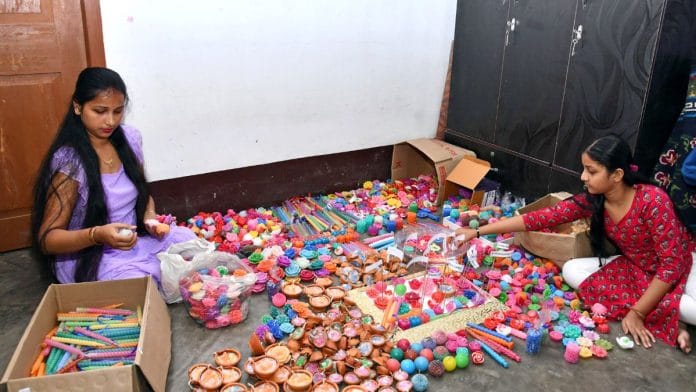New Delhi: The Central Government Tuesday informed the Lok Sabha that more than 1.48 crore women across the country have become ‘Lakhpati Didis’, earning at least 1 lakh rupees per annum under the flagship rural initiative.
The information was shared by the Ministry of Rural Development in response to a question raised by JDU MPs Giridhari Yadav, Dinesh Chandra Yadav and Lovely Anand.
The scheme, run under the Deendayal Antyodaya Yojana-National Rural Livelihoods Mission (DAY-NRLM), aims to improve the lives of poor rural households by mobilising them into Self-Help Groups (SHGs) and providing the necessary ecosystem for financial and social inclusion.
What is the Lakhpati Didi Scheme?
The ‘Lakhpati Didi’ initiative was launched to ensure that women members of SHGs are empowered enough to earn a sustainable monthly income of at least Rs 10,000, which amounts to Rs 1 lakh per annum. The earnings should be sustained for at least four agricultural seasons or business cycles, making the income long-term and reliable.
The scheme is not just about financial support. It aims to build entrepreneurial capacity, provide financial literacy, and ensure convergence with other government schemes so that SHG women are well-supported. Training, mentoring, skill development and handholding are core parts of the programme.
Significantly, the scheme focuses on individual women rather than the SHG as a unit. However, SHGs, Village Organisations (VOs), and Cluster Level Federations (CLFs) continue to play a major role in mobilisation, implementation and monitoring of the programme at the grassroots level.
According to the Ministry of Rural Development’s reply, the total number of ‘Lakhpati Didis’ reported across India so far is 1,48,32,258.
Some states have taken a significant lead in implementing the programme effectively. Maharashtra tops the list with 22,69,981 women achieving Lakhpati status. Andhra Pradesh follows with 17,41,362 women. Bihar has over 14.47 lakh women, while Madhya Pradesh has more than 12.84 lakh. West Bengal has also made remarkable progress, with over 11.59 lakh women crossing the annual income threshold.
Other states such as Odisha (7.80 lakh), Gujarat (6.06 lakh), Uttar Pradesh (11.15 lakh) and Chhattisgarh (4.32 lakh) are also significant contributors to the initiative’s success.
Even in smaller UTs and hill states, the programme is being implemented steadily, with Ladakh reporting 51,736 women, Tripura 61,478, and Himachal Pradesh 82,176.
‘No separate budget’
The government clarified in Parliament that no separate budget has been allocated exclusively for the Lakhpati Didi initiative. Instead, all financial support, including training, seed funding, and infrastructure, is covered under the broader umbrella of the DAY-NRLM scheme.
For the current financial year (2025-26), the total central allocation under NRLM is Rs 13,60,875 lakh, out of which Rs 1,79,386 lakh has already been released to states and union territories as of 30 June, 2025.
Uttar Pradesh: Rs 2,43,100 lakh allocated; Bihar: Rs 1,68,858 lakh allocated, Rs 42,214 lakh released; Maharashtra: Rs 1,05,957 lakh allocated, Rs 26,489 lakh released; Odisha: Rs 81,188 lakh allocated, Rs 20,297 lakh released; West Bengal: Rs 90,224 lakh allocated, Rs 22,556 lakh released; Rajasthan Rs 40,701 lakh allocated; Punjab Rs 7,639 lakh allocated and Rs 1,909 lakh released.
The significance of the Lakhpati Didi programme goes beyond just numbers. In rural India, women have long faced barriers to financial independence, limited access to formal credit, and a lack of recognition as entrepreneurs.
(Edited by Viny Mishra)
Also read: Centre plans service sector push for rural self-help groups as part of ‘Lakhpati Didi’ initiative






